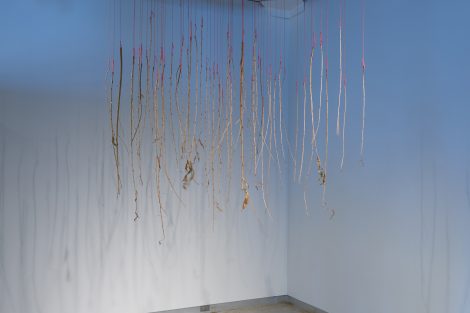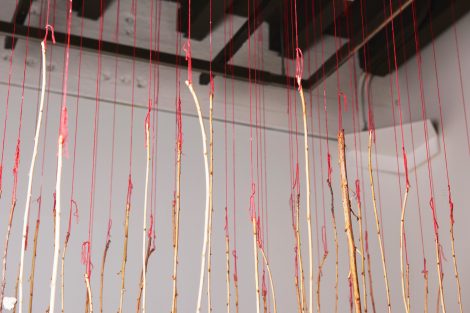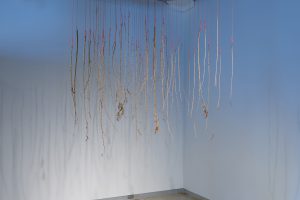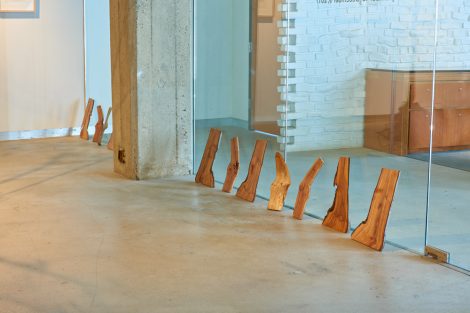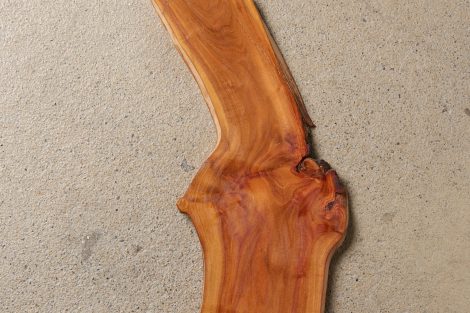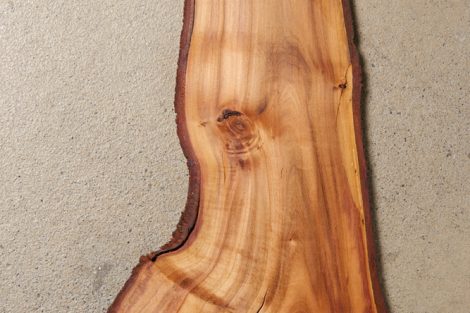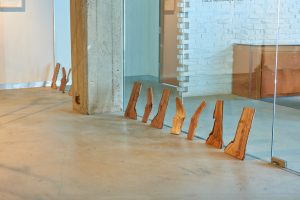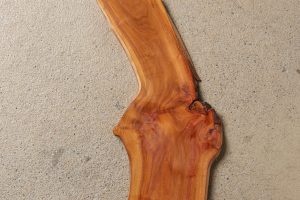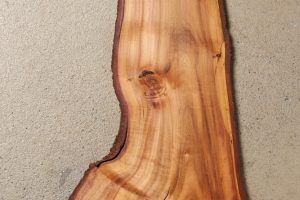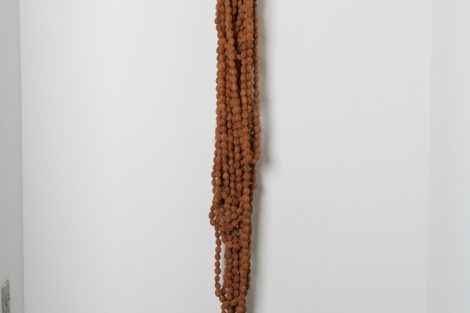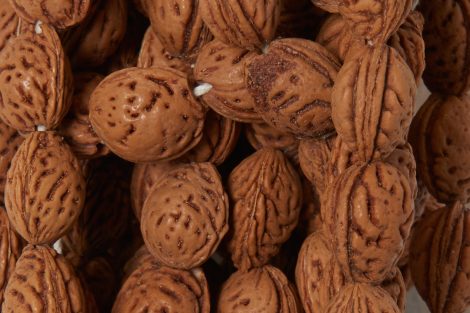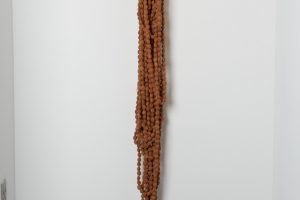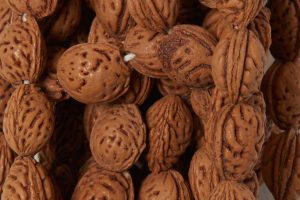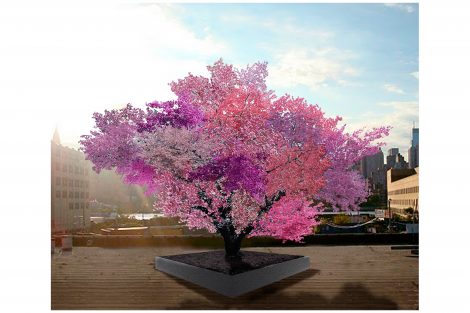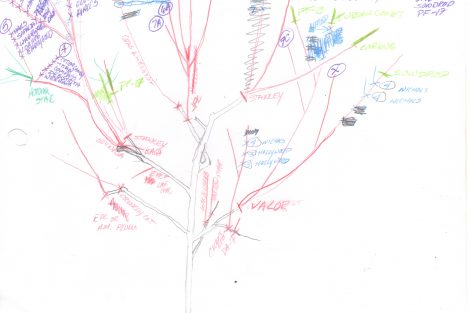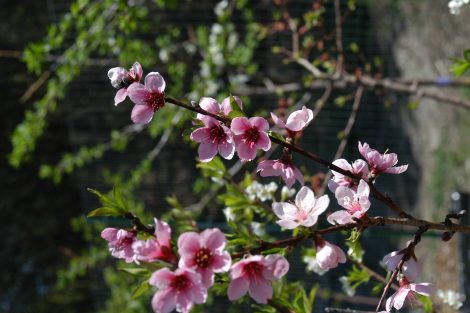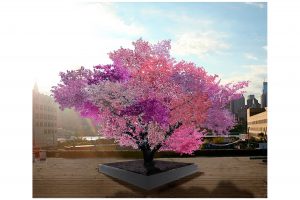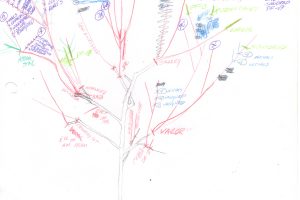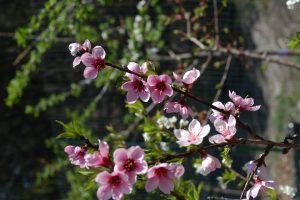Sam van Aken: Streuobstwiese, Checklist of the exhibition
Among remnants of antique variety stone fruit trees, bare-rooted young trees, peach whips suspended from the ceiling, delicate botanical drawings, and herbarium specimens, Sam van Aken’s exhibition considers issues of agricultural and cultural preservation, and food security and diversity.
Streuobstwiese is van Aken’s project to establish orchards of heirloom fruit trees. Van Aken envisions Streuobstwiese as an archive, a resource from which to reintroduce heirloom and antique fruits as well as traditional methods of growing them. It is also an aesthetic experience—visual, olfactory, and gustatory. Furthermore, it preserves culture itself. Our history and culture are embedded within food, and each of the individual fruit varieties in the Streuobstwiese reveals a history. From the peaches originally planted in the first Spanish missions in South America, then brought northward by Native Americans who propagated the trees for centuries, to apricots brought by Chinese immigrants who came to the country to work on the transcontinental railroad, the Streuobstwiese is a time machine that lets us taste foods that in some cases are a millennium old. It is a mnemonic site that preserves diversity in the age of industrial and manufactured food.
Checklist

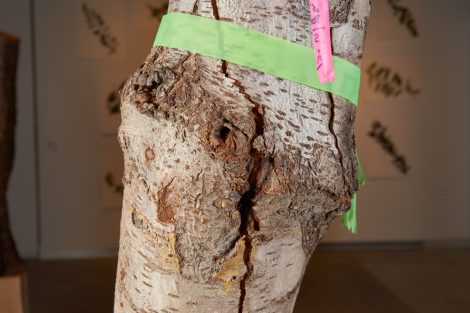
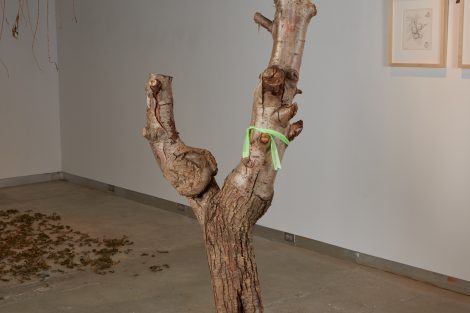
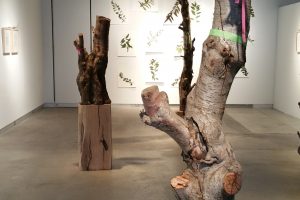
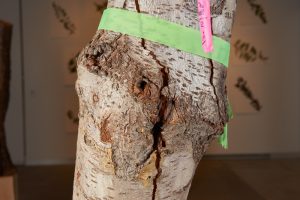

Untitled (Plum Bole), 2014/17
Trunk sections collected in 2014 from the last research plum orchard in the eastern U.S. These 20–30 year old “boles” possess a “graft knot” where a new variety was grafted to a root structure. Each bole is 5–7 feet tall with a diameter of 10–12 inches and placed on a solid black locust wood pedestals. 10 total: 2 in lobby, 8 in gallery.

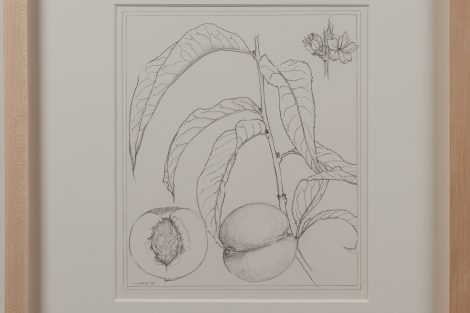
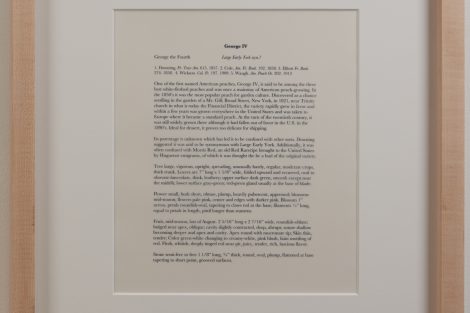
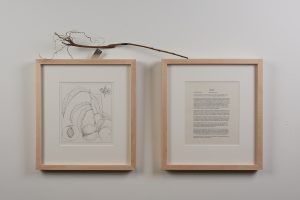
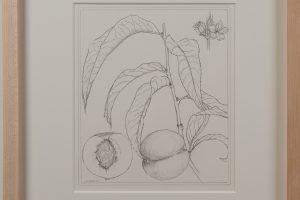
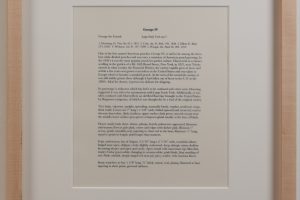
The Botanical Drawings, 2017
13 diptych sets including framed drawing, framed description, and bench graft—a branch of the variety depicted, grafted to a root structure in the same manner it would be prepared for planting—is placed across the top of the two frames. Graphite and ink on paper; framed size 17 x 15-1/2 inches.
Botanical drawings of threatened heirloom fruit varieties that have been preserved through Sam van Aken’s Tree of 40 Fruit Project; varieties be planted through the Streuobstwiese project. The Botanical Drawings project, when completed, will consist of 200 parent varieties of current commercially available stone fruit.
Each drawing is paired with a description of the fruit, researched from 18th and 19th century pomological albums and agricultural reports, such as those found in Henri-Louis Duhamel de Mancean’s classic Traite des Arbres Fruitiers, 1807-1835. The Botanical Drawings are currently being turned into hand colored, limited edition etchings, available by subscription. The drawings and accompanying description will also be the basis for a book.
Agen Plum, Black Apricot, Burbank Plumcot. Chinese Cling Peach, Common Damson Plum, Green Gage Plum, George IV Peach, Indian Blood Cling Peach. Napoleon Cherry, Peche de Nancy, Peento Peach, Satsuma Peach , Shiro Plums

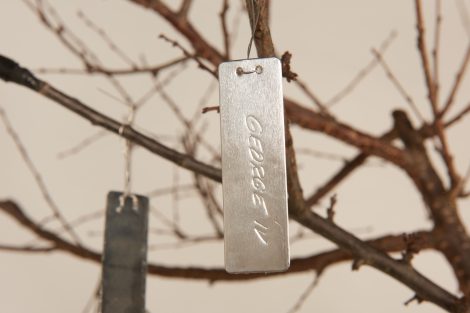
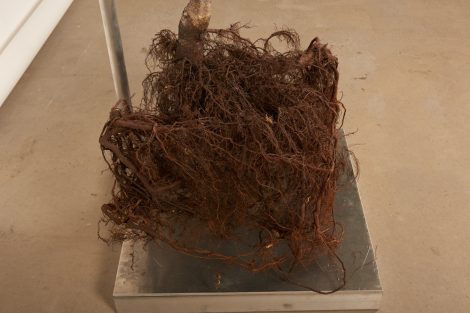
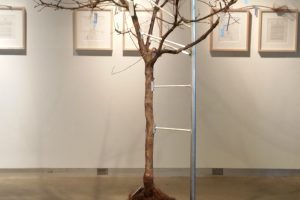

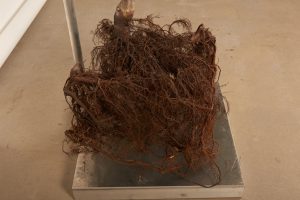
Tree of 40 Fruit-Bareroot, 2015/17
A five year old Tree of 40 Fruit with over 20 grafts was removed from its planter to expose the root ball. Each grafted branch is labeled with a tag detailing the name of the heirloom variety grown upon it. Each tag corresponds to a Botanical Drawing hanging in the gallery. Extreme and frequent swings in temperature during spring 2015 stressed and killed trees in van Aken’s nursery.
Trees are displayed on an aluminum armature. One is displayed in the gallery, the second is in the lobby.
Eclipse Peach, 2017
Peach wands, red cotton thread, leaves, wood lattice
Peach “wands”—24–36 inch sections of branches from this year’s growth—were collected in Washington State doing the total solar eclipse, August 21, 2017. The wands were soaked in saltwater until the water evaporated and each was strung upside down with red cotton thread to “beat off evil spirits” according to a 3,000 year old Chinese ritual.
…peach wands are supposed to be especially useful to beat off all evil spirits, only they must be plucked during a solar eclipse and a hole bored through one end for hanging up by, during a lunar eclipse, which perhaps accounts for their fewness…. The lucky possessor of an efficacious peach wand is supposed to be able to sleep at night with it under his pillow in full confidence that no evil spirits can harm him.
(Ulysses Prentice Hedrick. The Peaches of New York, Twenty-Fourth Annual Report—Vol. 2—State of New York, Department of Agriculture, 1917) p 9
Untitled (Graft Section), 2014/2017
Thirteen sections from three 20-30 year old tree trunks reveal where a graft was placed on the tree.
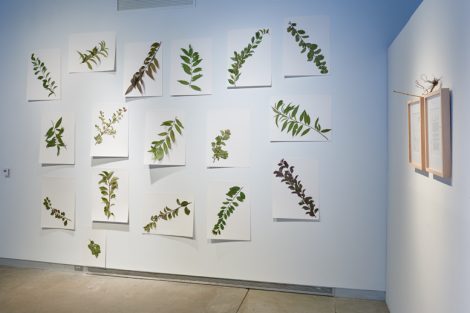
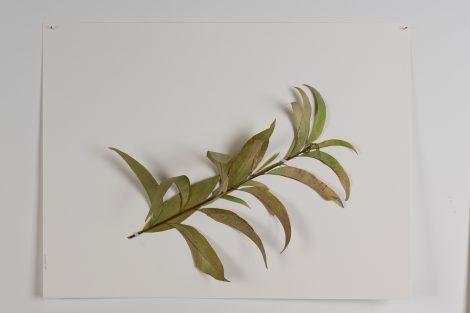
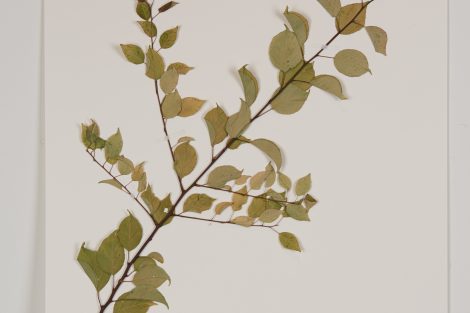
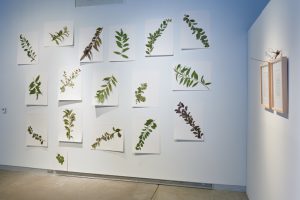


Untitled (Pressed Branches), 2017
Work-in-progress. A selection of voucher herbarium specimens—pressed plant samples, branches and leaves, used for scientific study. Herbarium specimens are often presented in dried form, mounted on paper. Van Aken used methods he observed at the National Museum of Natural History, Smithsonian Institution, to press and dry the specimens shown here. In the coming year van Aken will add flowers, and fruit. 17 plant specimens of 15 varieties, mounted on archival rag paper.
Babcock Peach, Black Apricot, Blood Leaf Peach, Chinese Montgamet Apricot, Coe’s Golden Drop Plum, Early Laxton Plum, Elephant Heart Plum, Georgia IV Peach, Hollywood Plum, Peregrine Peach, Santa Rosa Plum, Shiro Plum,
Pressed plant specimens, rag paper, 24 x 18 inches, 18 x 12 inches
Peach Strand, 2017
1,000 peach seeds strung on cotton thread, 48 high inches.
Tree of 40 Fruit
On the Karl Stirner Arts Trail
The Tree of 40 Fruit is a single tree with the capacity to grow 40 different varieties of stone fruit including peach, plum, apricot, nectarine, cherry, and almonds.
Created through the process of grafting, the Tree of 40 Fruit appears as a normal fruit tree throughout the majority of the year until spring when it blossoms in variegated tones of pink, white, and crimson, and summer when it becomes laden with a multitude of fruit. Primarily composed of antique and native stone fruit varieties, the Tree of 40 Fruit is a form of conservation, preserving rare, unknown, or now forgotten cultivars that are not commercially available.
